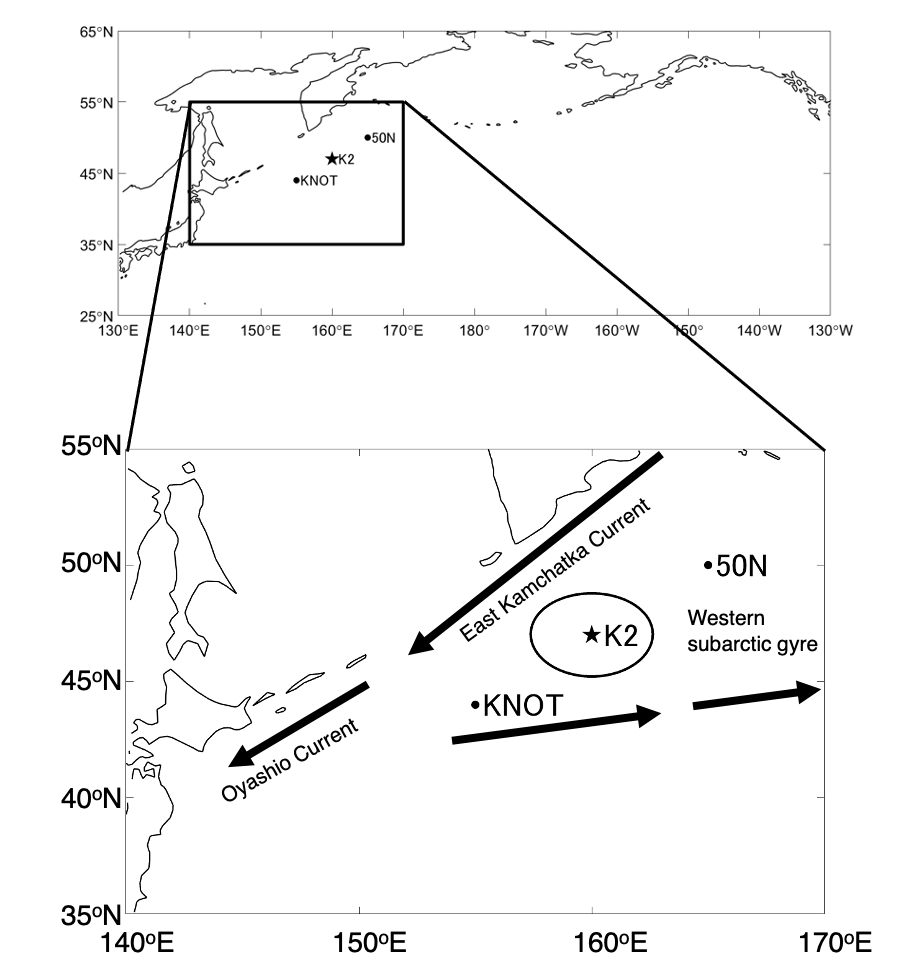When phytoplankton photosynthesize in the ocean surface layer, the CO2 in the ocean surface layer becomes organic carbon, which then sink. The CO2 in the ocean surface layer then decreases, and CO2 is dissolved from the atmosphere into the ocean. This sequence of events is known as the biological pump. It is known that organic carbon is efficiently transported to the deep ocean in the western subarctic North Pacific (inside the western subarctic gyre in Figure 1) (Honda, 2003), which is the target area of this study, and that microbial decomposition of organic carbon in the mid-depth layers is low (Honda 2020). Therefore, it is likely that when biological production occurs in the surface layers of the area, much of it is transported to the deep layers. In this study, we investigated the impact of the oceanic mesoscale eddies, which are thought to influence biological production, on the carbon cycle in the western subarctic North Pacific. The oceanic mesoscale eddies are explained in detail in a separate course, "Oceanic Mesoscale Eddies: High and Low Pressures in the Ocean".

Figure 1: Location of station K2 (47°N, 160°E) (★)